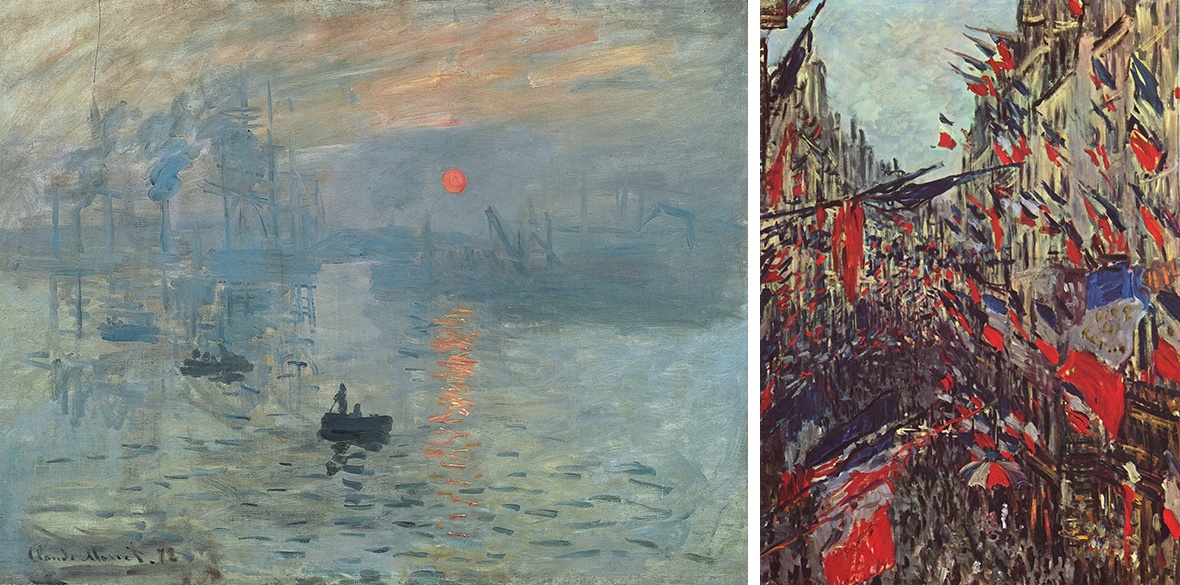This is the last article you can read this month
You can read more article this month
You can read more articles this month
Sorry your limit is up for this month
Reset on:
Please help support the Morning Star by subscribing here
IN 1874, three years after the bloody and traumatic demise of the Paris Commune, Claude Monet — son of a Parisian greengrocer — showed his work at group exhibition in Paris of like-minded painters.
His canvas, laconically titled Impression, Sunrise, depicts in swift and almost off-hand brush strokes the hazy view of the port of his adopted city Le Havre, as seen from his window at a dawn enveloped by dense fog.
The canvas's title provided the Le Charivary magazine’s art critic Louis Leroy's with the headline “The Exhibition of the Impressionists” for the review — not particularly imaginative, except for the neologism “impressionists.” It stuck like glue.
Another critic, Theodore Duret, who promoted Gustave Courbet, argued that Monet instigated a new way of seeing and painting entirely superseding Realism. “[Monet] was no longer painting merely the immobile and permanent aspect of a landscape but its fleeting appearances which the accidents of atmosphere present,” he wrote.
The artists’ response was uneasy: “Everyone discusses my art and pretends to understand, as if it were necessary to understand, when it is simply necessary to love.”
And that is what the general public eventually caught on to. Impressionism became one of the most enduring, popular and instantly recognised periods in contemporary European painting. Over time, it has also been the most commercially successful. Last year Monet’s Meules (Wheat stacks) sold for an insane £85.7 million, the ninth most-expensive painting ever sold at auction.
With the wounds of the Commune still raw, gone was the “rebel with a social cause” in the mould of Delacroix, Daumier, Goya or Courbet.
Monet’s political detachment is best illustrated by the high vantage point from which The Rue Montorgueil and its twin canvas Rue Saint-Denis are painted. It is a stupendous depiction of the triumphalist republican flag waving on June 30 1878, part of the third Universal Exhibition in Paris which marked the victory over the monarchists.
Although most Impressionists were supporters of the nascent Third Republic — Camille Pissarro was a committed anarchist, permanently residing on the police’s watch list — the centre of their visual attention was the ordinary and commonplace.
Landscapes, still nature, leisure gatherings, streetscapes and portraiture were their life-affirming, if escapist, interest and that neutrality facilitated groundbreaking formal experimentation that was ushered in by a number of significant scientific advances which the Impressionists keenly followed and engaged with.
John Dalton's discovery of the electron revealed the “vibratory” state of nature, hence the “quivering” effect of many of their paintings and neuroscience established that what the eye “sees” is different from what the brain understands.
This was confirmed in Johann Wolfgang Goethe’s 1810 argument that colour was not simply a scientific measurement but an entirely unique and subjective experience This correlation had a massive influence on the Impressionists.
Experiments in the application of primary and complementary colours created entirely new aesthetics, where the eye of the viewer was often challenged to do the “colour mixing” of raw pigments, seemingly applied impromptu to canvases.
“Colour is my day-long obsession, joy, and torment,” Monet would say about the endeavour to convey emotions and feeling by applying a scientific understanding of light.
Crucially, developments in chemistry delivered synthetic pigments of astonishing luminosity and saturation and, from around 1860, these were put into tubes which allowed the artists to migrate the studio into the plein air (outdoors). The impressionist Pierre-Auguste Renoir had no doubt that “without tubes of paint, there would have been no Impressionism.”
Last, but not least, was the modern French box easel, developed in 1860s. Its telescopic legs and built-in paint box and palette were manna from heaven for the likes of the peripatetic Monet.
In 1899, politics caught up with Monet when he publicly supported Emile Zola’s “J’accuse” denunciation of the Dreyfus Affair with the memorably principled “Bravo!”
To elude a prison sentence passed in the ensuing libel case, Zola left for exile in London and Monet, fearing a backlash, followed him. The “affair” with its anti-semitic undertones split the Impressionists ranks, as it did the whole of France. Monet and Pissarro aligned with the Dreyfus camp while Pierre-Auguste Renoir, Paul Cezanne and Edgar Degas sided with the anti-Dreyfusards.
Monet’s three-year-long London visit left innumerable signature “impressions” of the Palace of Westminster, always painted at dawn or sunset.
The quintessential Impressionist, he died aged 86. He never used black paint and at his modest funeral his friend and France’s former prime minister Georges Clemenceau reacted to the black cloth covering the coffin by exclaiming: “No! No black for Monet!” and replaced it with a flower-patterned one.












